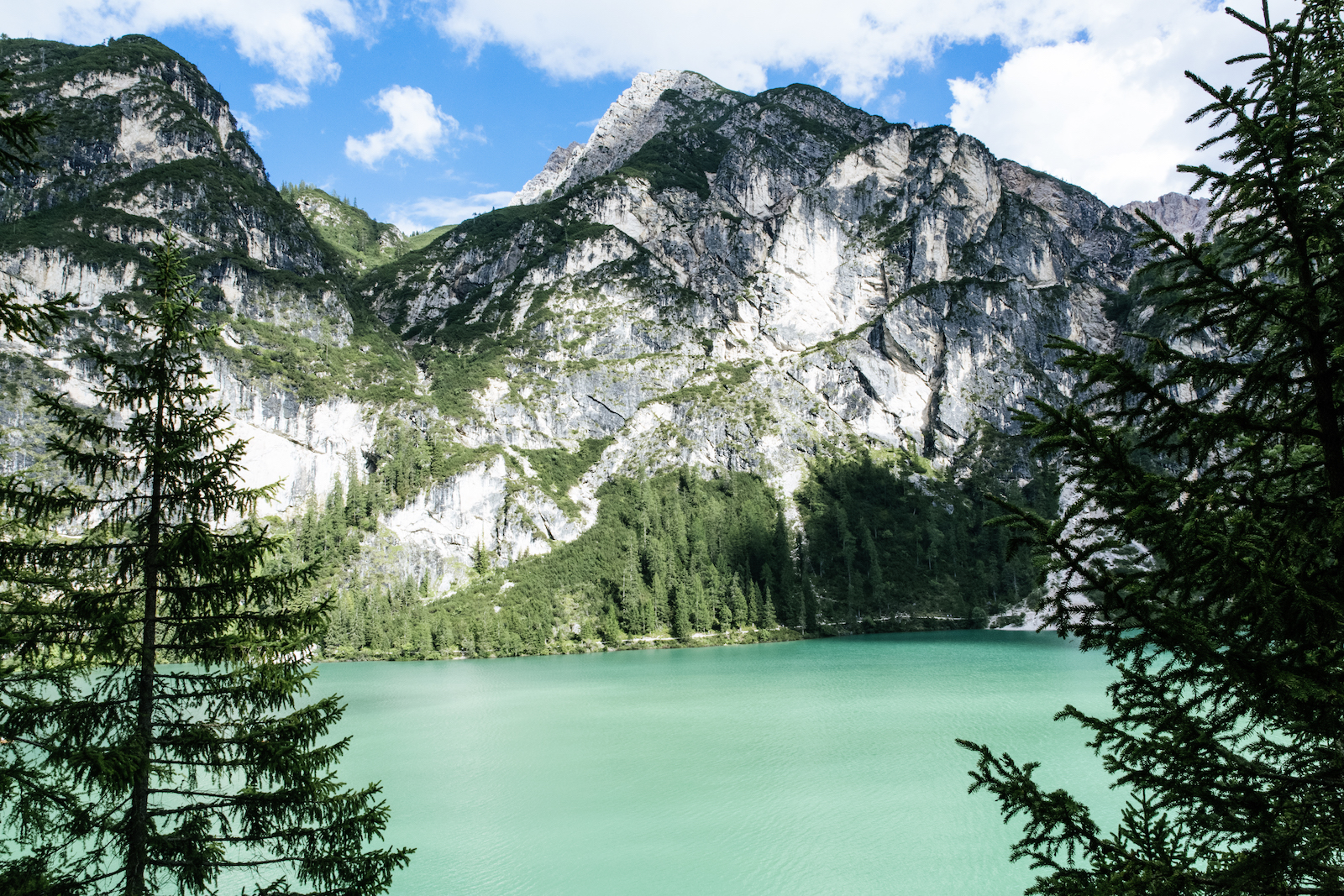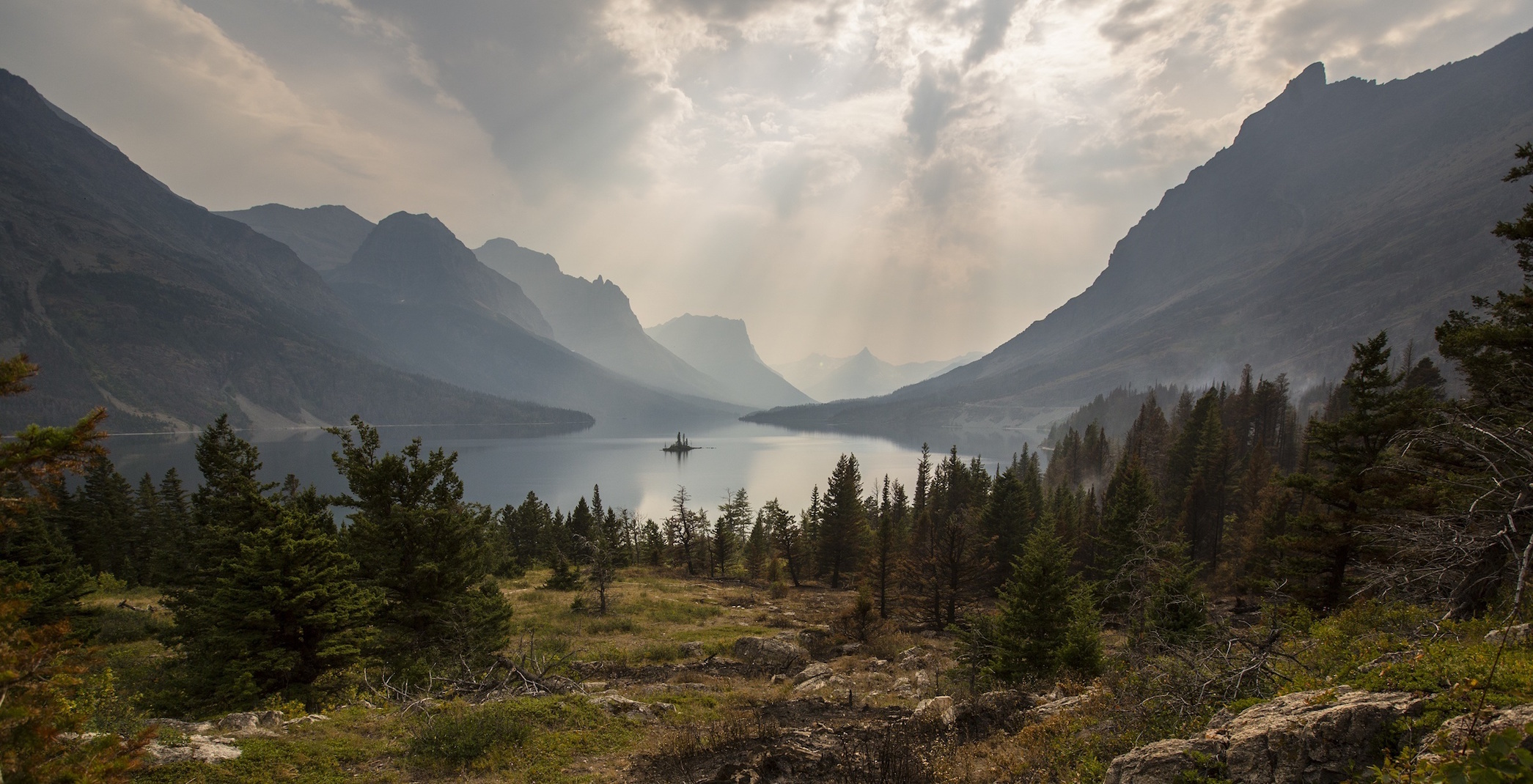

Columbia River Treaty Local Governments Committee
The Columbia River Treaty (Treaty) was ratified by Canada and the United States (the U.S.) in 1964, resulting in the construction of three dams in Canada – Mica Dam north of Revelstoke; Hugh Keenleyside Dam near Castlegar; and Duncan Dam north of Kaslo – and Libby Dam near Libby, Montana, which creates Koocanusa reservoir that floods 68 kilometres into BC.

Spring drawdown in Arrow reservior at Nakusp
Since 1964 the Treaty has provided benefits for the Pacific Northwest region in the U.S. and in BC. However, here in the Canadian portion of the Columbia River Basin (the Basin) – the area that was most impacted by the Treaty – substantial sacrifices were made by residents during the creation of the dams and reservoirs, and impacts continue as a result of hydro operations.
Beginning in 2024, either the U.S. or Canada can terminate substantial portions of the Treaty, with at least 10 years’ prior notice. This prompted the BC government – as the level of government with the responsibility to implement the Treaty – and the U.S. to conduct separate reviews, beginning in 2011, to consider whether to continue, amend or terminate the Treaty.
The outcome of both reviews was to negotiate a modernized Treaty, not to terminate. Canada – as the level of government responsible for international treaties, and with the involvement of B.C. - began negotiations with the U.S. in 2018.
Local governments within the Basin have formed the BC Columbia River Treaty Local Governments’ Committee (the Committee) to actively and meaningfully engage in decisions around the future of the Treaty.
Through the Committee, with support from Columbia Basin Trust (CBT), Basin local governments are working together to seek refinements to the Treaty and to address existing domestic issues to improve the quality of life for Basin residents.
The Columbia River

The Columbia River is 2,000 km long. It starts at Columbia Lake near Canal Flats, BC, and ends at the Pacific Ocean at Astoria, Oregon.
By volume, the Columbia is the fourth largest river in North America. By drainage area, it is the sixth largest river with a watershed that includes BC and seven states: Washington, Oregon, Idaho, Montana, Wyoming, Utah and Nevada.
As most of the river’s water comes from melting snow, its volume of water fluctuates seasonally. The highest volumes typically occur as snow melts between April and September, and the lowest between December and February.
From its headwaters to the ocean, the river drops 820 m. This change in elevation, combined with the hundreds of tributaries that flow into the river, make the Columbia a powerful generator of hydroelectricity.
The Columbia River Treaty
In 1964, Canada and the United States (U.S.) ratified the Columbia River Treaty (Treaty), a transboundary water management agreement.
In exchange for providing flood control and for an equal share of the incremental U.S. downstream power benefits, Canada agreed to build three dams – Duncan, Hugh L. Keenleyside and Mica - in British Columbia and allowed the U.S. to build a fourth dam, the Libby Dam, that flooded into Canada.
The Canadian facilities vastly reduced flood risk in B.C. and the U.S. The Treaty also enabled the construction of hydroelectric projects in B.C. that provide approximately half of the potential generation in the Province, as well as providing for the production of significantly more electricity at U.S. hydropower facilities.

Spring drawdown at the north end of Kinbasket reservior, near Valemount
The Treaty dams and reservoirs inundated 110,000 hectares (270,000 acres) of Canadian ecosystems, displaced more than two thousand residents as well as First Nations, communities and infrastructure, and impacted farms, tourism and forestry activities. First Nations and public consultation and mitigation at the time could be considered inadequate to non-existent by today’s standards, and feelings of hurt remain to this day.
The Canada-British Columbia Agreement (1963) allocated most Treaty rights, benefits and obligations to the Province. Although this agreement retains Canada’s constitutional jurisdiction for international treaties, it requires Canada to obtain the concurrence of the Province before terminating or amending the Treaty.
The U.S. prepaid Canada $64 million for 60 years to provide assured flood control operations which resulted in reduced flood damage and increased safety for U.S. citizens. The U.S. also committed in the Treaty to paying Canada half of the incremental power potential that could be produced because of the new flow regimes made possible by the Treaty coordination.
You can learn more about the Treaty at the BC Treaty Engage website and Columbia Basin Trust’s CRT website.
The Treaty has no end date but either country can unilaterally terminate the Treaty from September 2024 onwards provided that at least 10 years notice is given.
This ability to terminate the Treaty, and the changing flood control provisions that will occur post-2024 whether the Treaty is terminated or not, prompted B.C. and the U.S.to undertake independent reviews of the Treaty to determine its future.
On December 13, 2013, the U.S. Entity made its final recommendations to the U.S. federal government. It recommended a modern treaty framework that balances power production, flood control and ecosystem functions.

On March 14, 2014, the Province of BC announced its decision to continue the Columbia River Treaty and seek improvements within its existing framework. Fourteen principles will guide future discussion and, among others, include equitable sharing of benefits from transboundary coordination and recognizing that BC is impacted by CRT operations. The Columbia River Treaty Review Public Consultation Report summarizes the consultations processes and the input received.
Canada and the U.S. began negotiations on the Treaty in November 2019. You can stay updated on Treaty negotiations at the BC Treaty Engage website and by subscribing to the Columbia River Treaty Newsletter.
The Committee
In 2011, local governments across the Columbia Basin came together to help Basin residents and local governments engage in decisions around the future of the Columbia River Treaty.
With the support of the Columbia Basin Trust, the four regional districts in the region joined with the Village of Valemount and the Association of Kootenay Boundary Local Governments (AKBLG) to create the Columbia River Treaty Local Governments Committee.
Role
The Committee’s role is defined in its terms of reference.
The CRT Committee provides a coordinated venue to:
- ensure local governments of the region are actively engaged in CRT related issues;
- create opportunities for dialogue and consultation with Canadian provincial and federal agencies around CRT related issues;
- work with CBT to create education and awareness activities in the Region to increase local government and basin residents understanding around CRT related issues;
- work to help Canadian provincial and federal agencies understand regional views, values and interests with respect to the CRT; and
- create mechanisms that consider basin residents’ views in any discussions related to the future of the CRT and where appropriate, advocate for specific interests of the region.
Members
Each regional district appoints two representatives and the Village of Valemount and the AKBLG each appoint one representative to the Committee. The current members are listed below| Name | Appointing Group | Position | Role | Contact |
|---|---|---|---|---|
| Linda Worley | RDKB | Director Area B – Lower Columbia | Chair | lworley@rdkb.com |
| Stan Doehle | RDEK | Director Area B – Baynes Lake | Vice-Chair | director.doehle@rdek.bc.ca |
| Ron Oszust | CSRD | Mayor Golden | Member | ron.oszust@golden.ca |
| David Brooks-Hill | CSRD | Director Area B – Revelstoke/Trout Lake | Member | dbrooks-hill@csrd.bc.ca |
| Aimee Watson | RDCK | Director Area D – North end of Kootenay Lake | Member | awatson@rdck.bc.ca |
| Ramona Faust | RDCK | Director Area E – Rural area around Nelson | Member | rfaust@rdck.bc.ca |
| Jane Walter | RDEK | Director Area A - Kimberley | Member | s.janewalter@gmail.com |
| Diane Langman | RDKB | Mayor of Warfield | Member | diane.langman@warfield.com |
| Donnie MacLean | Valemount | Village Councilor | Member | dmaclean@valemount.ca |
| Clara Reinhardt | AKBLG | Mayor of Radium Hot Springs | Member | clara.reinhardt@radiumhotsprings.ca |

Our Recommendations
Letter to governments on CRT Negotiating Team
Updated January 2021 Recommendations
During 2011 through 2013, we listened to Basin residents and local governments in many venues to hear about the issues related to the CRT. We also researched potential solutions to some of the issues.
In December 2013, we provided our original recommendations on the future of the Columbia River Treaty (CRT) to the federal and provincial governments.
In September 2019 we updated our recommendations based on currently available information and invited public feedback on the draft version. We very much appreciate the feedback that we received. This feedback has informed the current recommendations which we released in January 2021.
A brief summary of the revisions in the current Recommendations compared to the original Recommendations has been prepared.
These Recommendations have been submitted to the provincial and federal governments as well the regional Indigenous Nations who are participating in the CRT negotiations (link to the letter to governments). These Recommendations contribute to the current negotiations to modernize the CRT and support resolution of domestic issues that can be resolved in B.C. We will continue to pursue solutions to domestic issues and to monitor and be involved in the Treaty negotiations when appropriate.
You are invited to provide your perspectives on CRT related topics to:
Committee Chair, Linda Worley - lworley@rdkb.com 250 231-1300
Committee Vice Chair Stan Doehle – director.doehle@rdek.bc.ca 250 531-3300
Executive Director, Cindy Pearce - cindypearce@telus.net 250 837-8505
What We Do
2018 – to date
Treaty Negotiations
After the Canadian Negotiating Team was appointed in 2018, the Committee’s activities ramped up extensively as follows:
- In 2018 and 2019 the Committee assisted the BC CRT Team to host two series of community meetings across the Basin to update information about CRT related issues and community concerns. See 2018 Community Meeting Summary Report and 2019 Community Meeting Summary Report.
- In 2019 we updated and refined our 2013 recommendations based on current information on the issues from our research and what we heard from Basin residents at the 2018 community meetings and invited feedback during the 2019 community meetings. Updated recommendations were released at the beginning of 2021 - See Our Recommendations.
- We strive to be in contact quarterly with representatives of the regional Indigenous Nations whom we recognize and support as active observers in the CRT negotiating process.
- We worked with the CRT Negotiating Team to establish a Columbia River Treaty Negotiations Team - Local Governments Committee Communications and Engagement Protocol. Based on this Protocol, the Committee receives verbal updates after each negotiating session. The Protocol also states that the Negotiations Team will seek input from the Committee to consider the LGC Treaty Recommendations in the negotiations and advice from the Committee will be sought if negotiating outcomes appear not to be consistent with the Committee’s recommendations, including specific desired outcomes if these are defined by the Committee.
- It is recognized that the current Treaty governance structure requires updating to meet the expectations of this era for representation of Indigenous Nations and involvement of residents and local governments. The Committee has created a Task Group of Committee members to research this topic in depth to bring ideas back to the full Committee for decisions. The Committee looks forward to providing input to the Negotiating Team to ensure the views of Basin residents and local governments are included in future Treaty governance mechanisms.
- We continue to attend and make presentations at U.S. Pacific Northwest events and meet with U.S. local government representatives to educate U.S. citizens about the impacts of the CRT in B.C.

Spring drawdown in Kookanusa Reservoir

Spring drawdown in Duncan Reservoir
Domestic Issues
- We compile, track and communicate regularly with the BC CRT Team on community specific issues and potential solutions and advocate for actions as needed.
- In 2019 we initiated discussions with BC Hydro about how to improve regional communications and engagement with Basin residents and local governments.
- Now that our recommendations are updated, the Committee is refocusing on potential solutions to the complex regional and sub-regional domestic issues.
Oriented new members
After the municipal elections in 2018, seven new Committee members were appointed, and a new Chair and Vice Chair were selected. An extensive orientation process was implemented to support the new members to fully engage in the complex topics being considered in the negotiations and the ongoing domestic issues.
2014 to 2017
During this period, after the CRT Review was completed and before negotiations were initiated, the Committee developed relationships with the federal agencies and elected officials responsible for Treaty negotiations. We also gained a deeper understanding of Treaty issues through a number of activities and began to advocate for solutions to domestic issues. The Committee Chair continued to make presentations in the U.S. Pacific Northwest to educate U.S. citizens about the impacts of the CRT in B.C.
Columbia Basin Regional Advisory Committee
One of the Committee’s domestic recommendations is for ‘meaningful ongoing engagement of Basin residents.’ In 2014 the Committee worked with the Province and BC Hydro to implement a new Columbia Basin Regional Advisory Committee (CBRAC). This Committee is a diverse, Basin-wide group, representing a broad range of perspectives, interests and geography, which is helping inform the hydroelectric operations in the Columbia Basin and potential future improvements to the Columbia River Treaty. The Committee Chair, Vice Chair and Executive Director are members of the CBRAC Steering Committee which guides the activities of the provincial CBRAC Secretariat.
Learn more about CBRAC at the BC CRT engage website.
Background research
The Committee undertook a number of activities to more fully understand the Treaty related and domestic issues during this period:
- Commissioned The Columbia River Treaty and Local Interests: A Shared Responsibility, 2017 ( Appendix A, Appendix B, Appendix C ).
- Completed Overview of Community Engagement in Columbia Basin Hydro Operations, 2015.
- Organized a workshop on Kootenay system operations and issues. View presentations at: https://thebasin.ourtrust.org/columbia-river-treaty/resources/ (click videos and scroll to Info Session Files
- Researched Basin residents’ concerns with the Columbia Fish and Wildlife Compensation Program (FWCP).
- Meetings with regional Indigenous Nations, the BC Water Comptroller and U.S. local governments.
2011-2013

Spring drawdown in South Kinbasket Reservoir
The Committee was very active in these early years including the following:
- Submitted recommendations to the provincial and federal governments on the future of the CRT and potential solutions to domestic issues. Our recommendations are based on what we heard from Basin residents about the CRT. See Summary of Feedback from Basin Residents.
- Made a number of presentations at events in the U.S. Pacific Northwest to educate U.S. citizens about the impacts of the CRT in B.C.
- Partnered with the BC CRT Review Team to host and participate in two rounds of community meetings to learn about Treaty related and domestic issues from Basin residents. See Columbia River Treaty Review Public Consultation Report.
- Held two strategic planning sessions with advisors.
- Met with local governments in Idaho and Montana and attended Basin Conference in Polson, Montana
- Assisted the BC CRT Team to prepare A Review of the Range of Impacts and Benefits of the Columbia River Treaty on Basin Communities, the Region and the Province and Summary and with the design and implementation of the CRT Review Sounding Board.
- Working with CBT, compiled a listing of the concerns of Basin residents and local governments in Summary of Canadian Dam and Reservoir Issues and sought government response on these issues.
- Prepared Fact Sheet: CRT: Key Interests of Canadian Columbia Basin Residents.
- The Committee was created in 2011.
Contact Us
Committee Chair - Linda Worley, Director, Regional District of Kootenay-Boundary
Phone: 250 693-5500 Cell: 250 231-1300
Committee Vice Chair - Stan Doehle, Director, Regional District of East Kootenays
director.doehle@rdek.bc.ca Phone: 250 531-3300 Executive Director - Cindy Pearce Phone: 250 837-8505
Appointing Group Name Position Role Contact CSRD Ron Oszust Mayor Golden Member ron.oszust@golden.ca
CSRD David Brooks-Hill Director Area B – Revelstoke/Trout Lake Member dbrooks-hill@csrd.bc.ca
RDCK Aimee Watson Director Area D – North end of Kootenay Lake Member awatson@rdck.bc.ca
RDCK Ramona Faust Director Area E – Rural area around Nelson Member rfaust@rdck.bc.ca
RDEK Stan Doehle Director Area B – Baynes Lake Vice-Chair director.doehle@rdek.bc.ca
RDEK Jane Walter Director Area A - Kimberley Member s.janewalter@gmail.com
RDKB Linda Worley Director Area B – Lower Columbia Chair lworley@rdkb.com
RDKB Diane Langman Mayor of Warfield Member diane.langman@warfield.com
Valemount Donnie MacLean Village Councilor Member dmaclean@valemount.ca
AKBLG Clara Reinhardt Mayor of Radium Hot Springs Member clara.reinhardt@radiumhotsprings.ca









